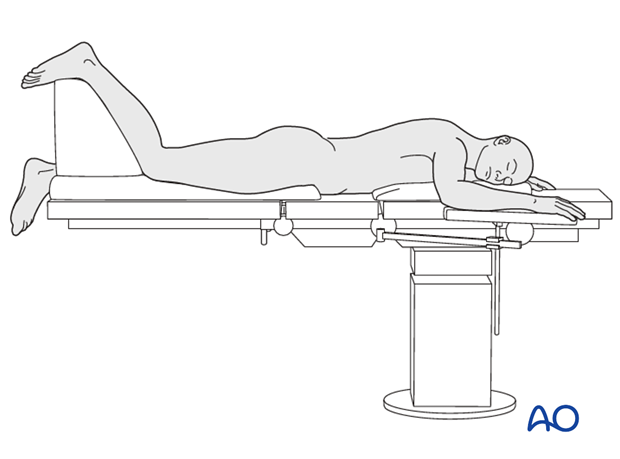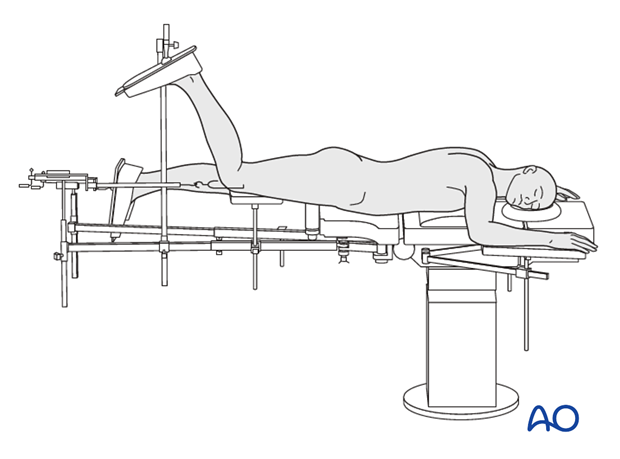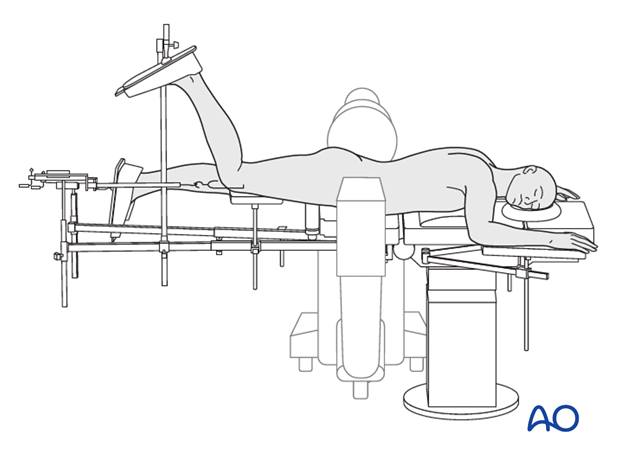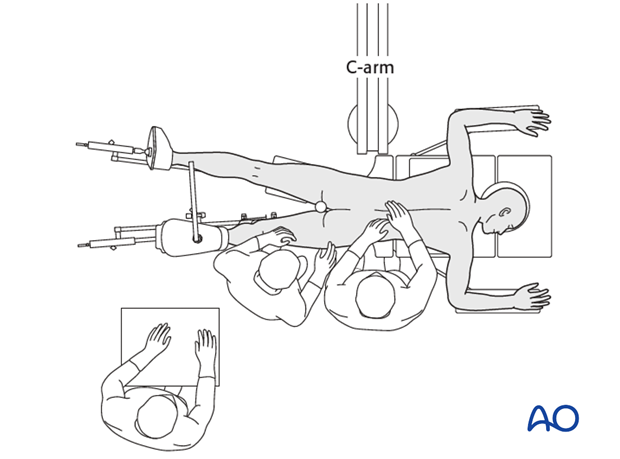Prone position
1. General consideration
The Kocher-Langenbeck approach is commonly performed with the patient in the prone position (the alternative is the lateral position).
2. Setup and essential equipment
There will be local variation depending on resource and surgeon’s preference, but the following should be used:
- Radiolucent table
- Image intensifier with experienced radiographer
- Traction
3. Radiolucent table
Position the patient prone on a radiolucent table.
Cushions should be applied under the chest, pelvis, distal thigh, and ankle to avoid pressure sores.
The involved lower limb is draped free to allow intraoperative position changes. Bolsters maybe applied under the lower leg to allow knee flexion and relaxation of the sciatic nerve to protect it from injury.
The surgeon must be able to distract the femur from the acetabular cartilage to allow excision of incarcerated fragments and to view the acetabular-articular reconstruction. This is particularly relevant in cases with marginal impaction.
The surgeon must be able to apply traction. Techniques include the application of manual traction through a distal femoral traction pin or the application of a universal distractor applied from the pelvic to the femur. Make sure the involved acetabulum is well visible under fluoroscopic control in AP, iliac oblique and obturator oblique views.

4. Fracture table
Alternatively use a fracture table that will allow the manipulation of the limb and the application of skeletal traction.
Traction is applied typically to the distal femur by a distal femoral traction pin connected to an apparatus on the table. The knee must be kept flexed and the hip extended to allow relaxation of the sciatic nerve.
Make sure the involved acetabulum is visualized under fluoroscopic control in AP, iliac oblique and obturator oblique views.

The C-arm is positioned across the table and enters from the contralateral side of the body as shown.

The patient’s arms should be positioned and padded to minimize tension on the brachial plexus, and to allow access for the surgical team.













